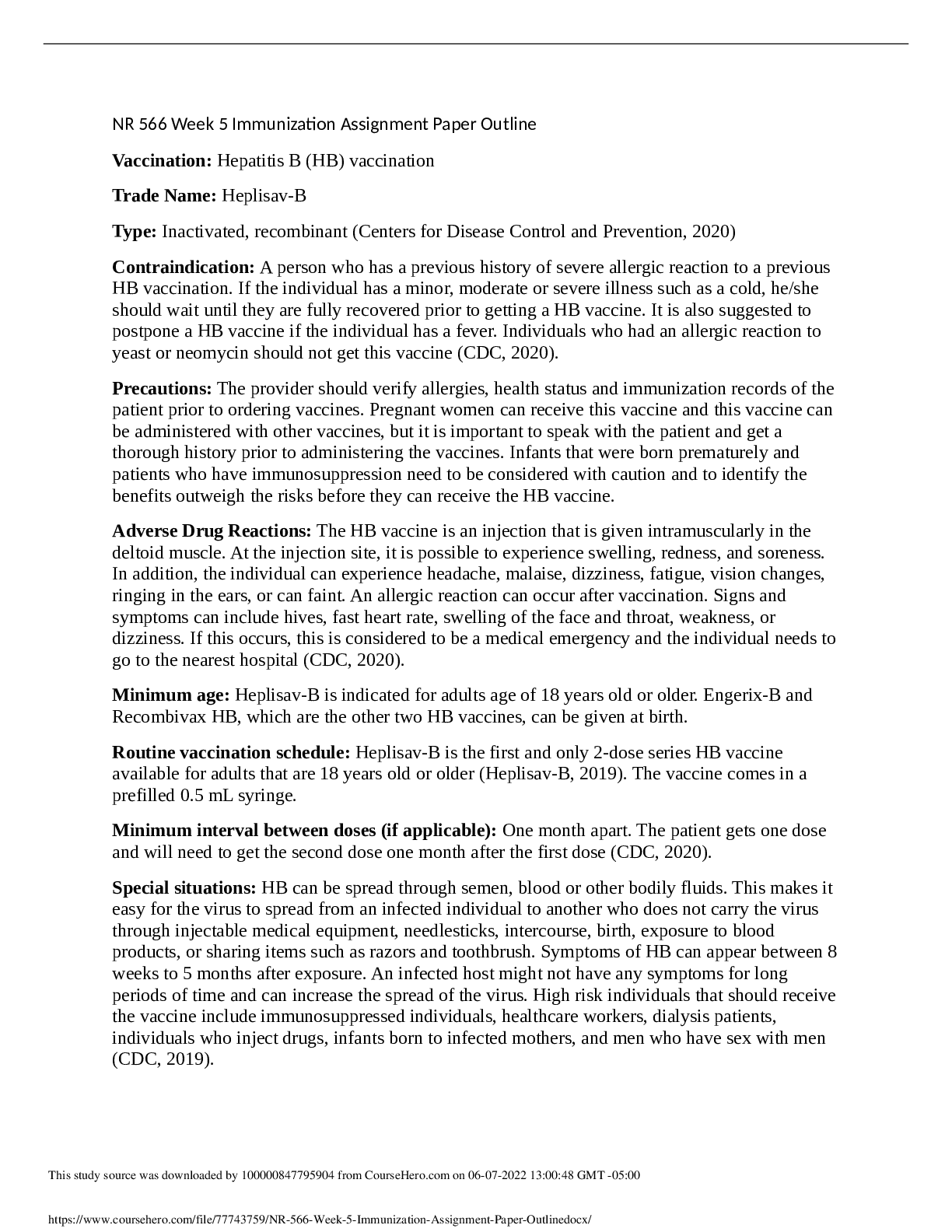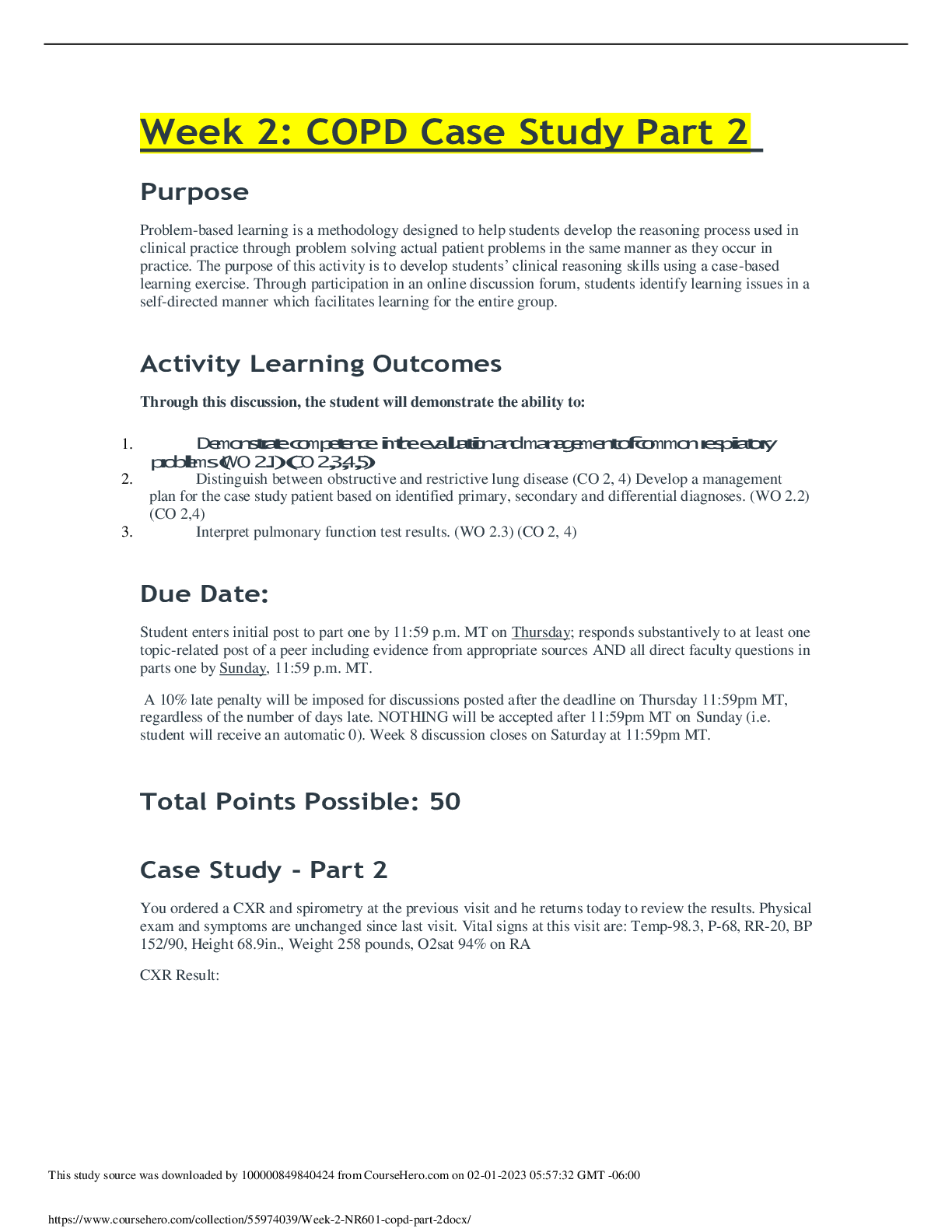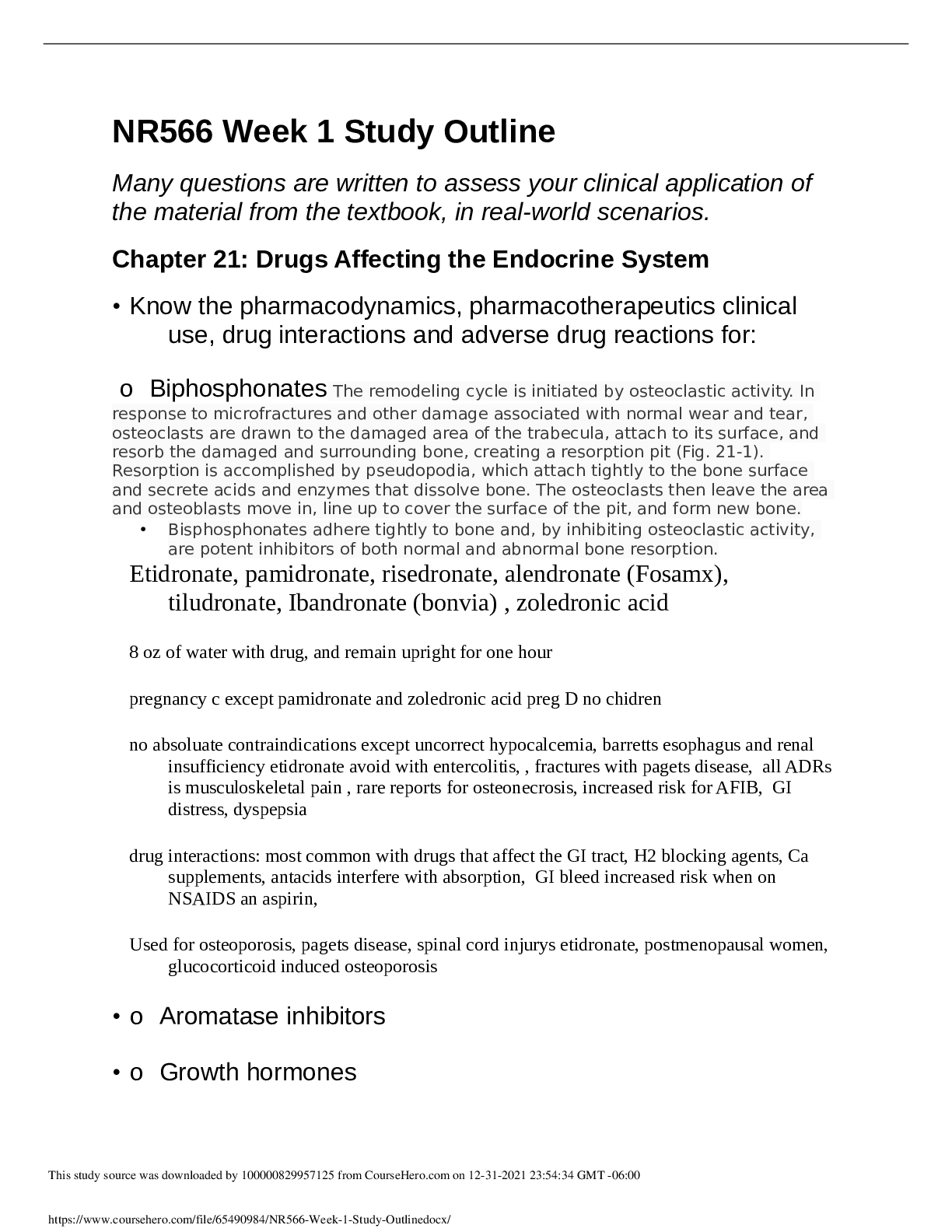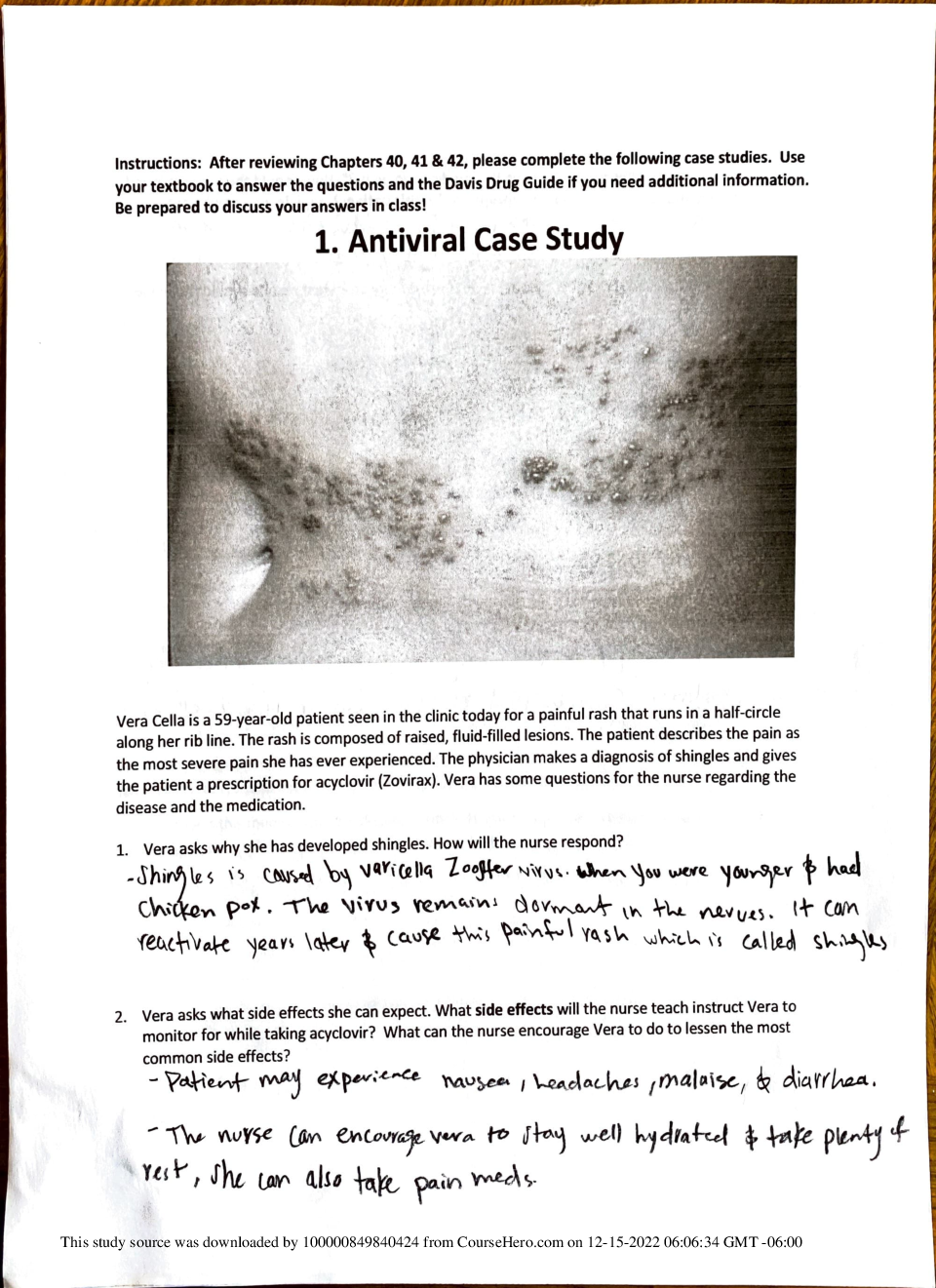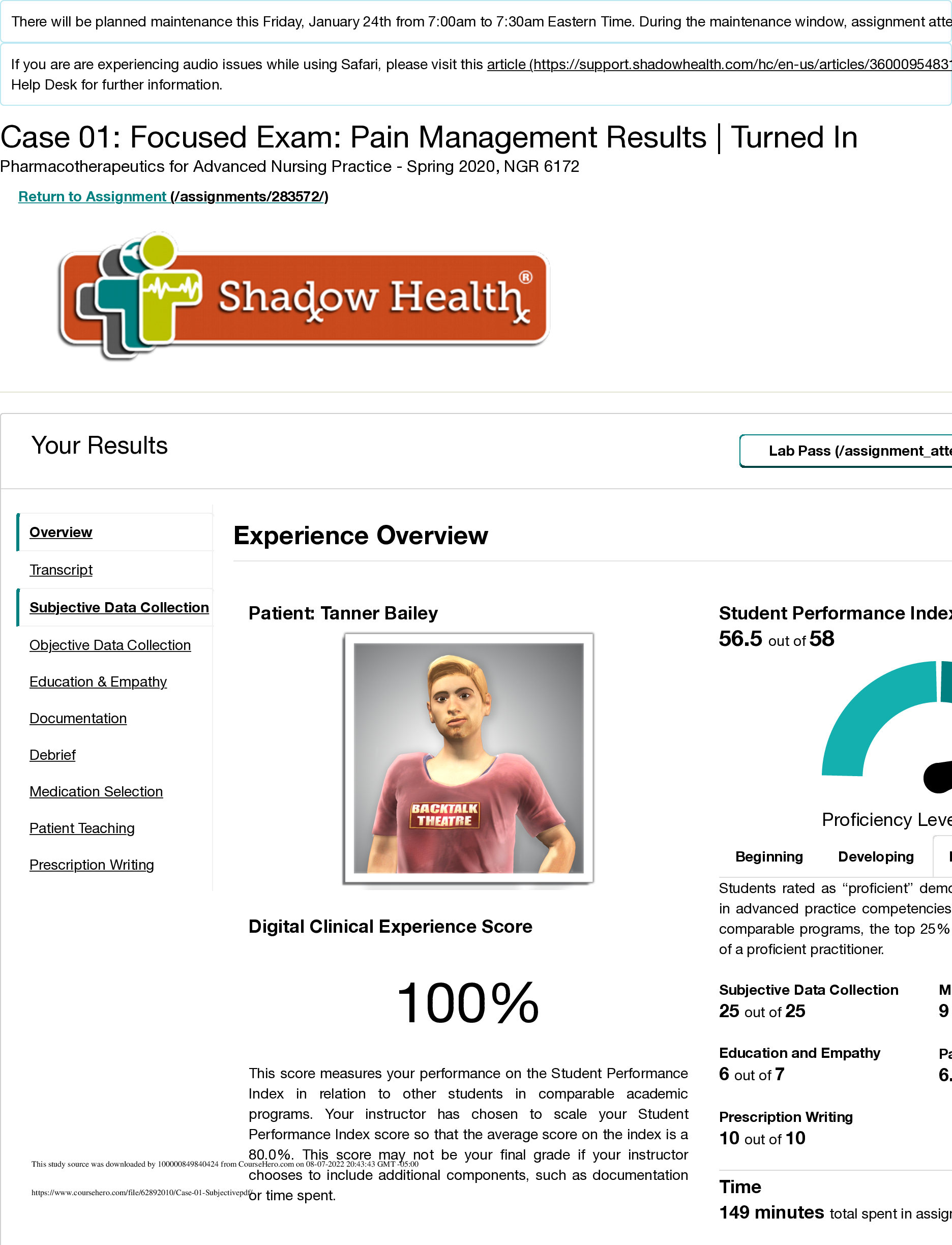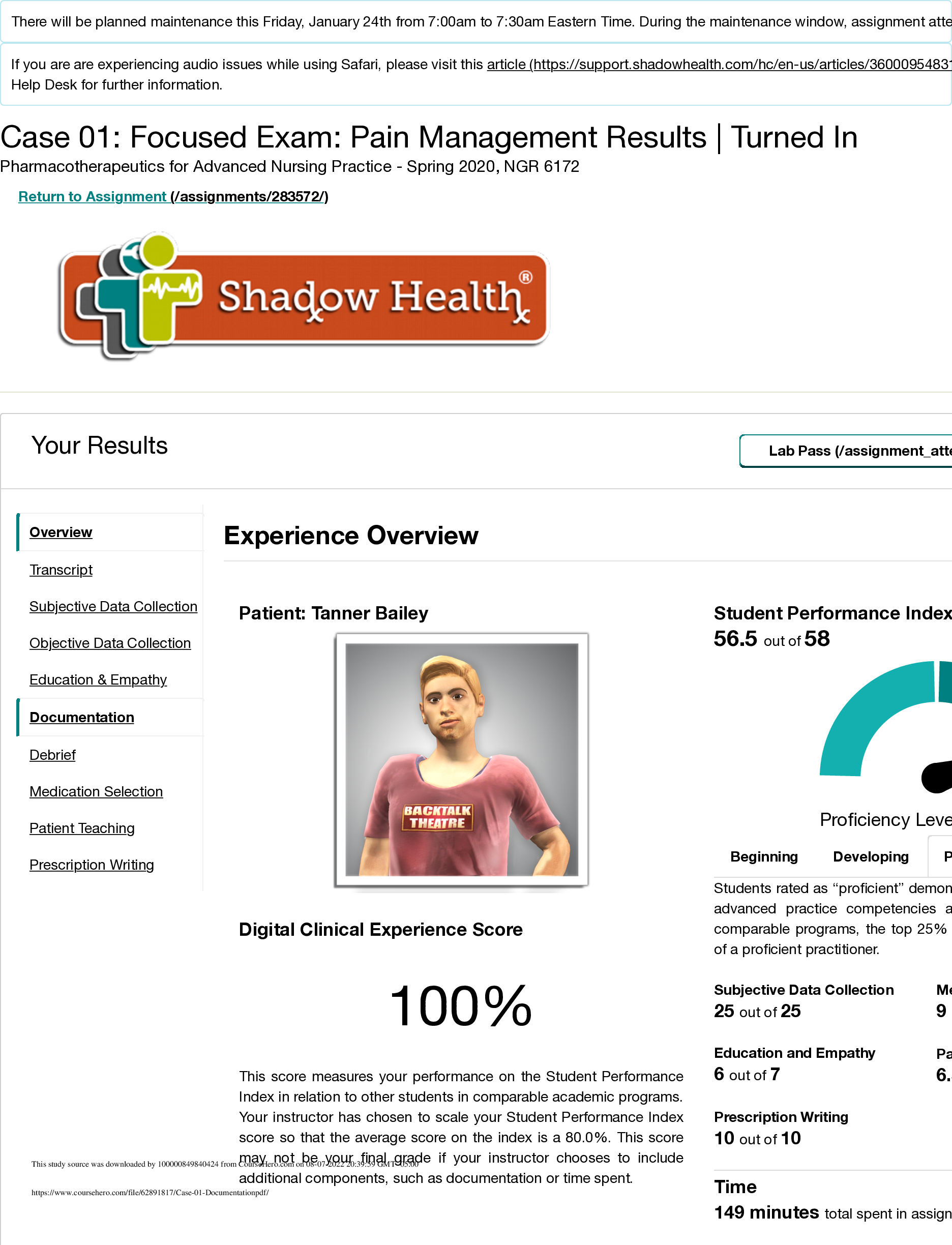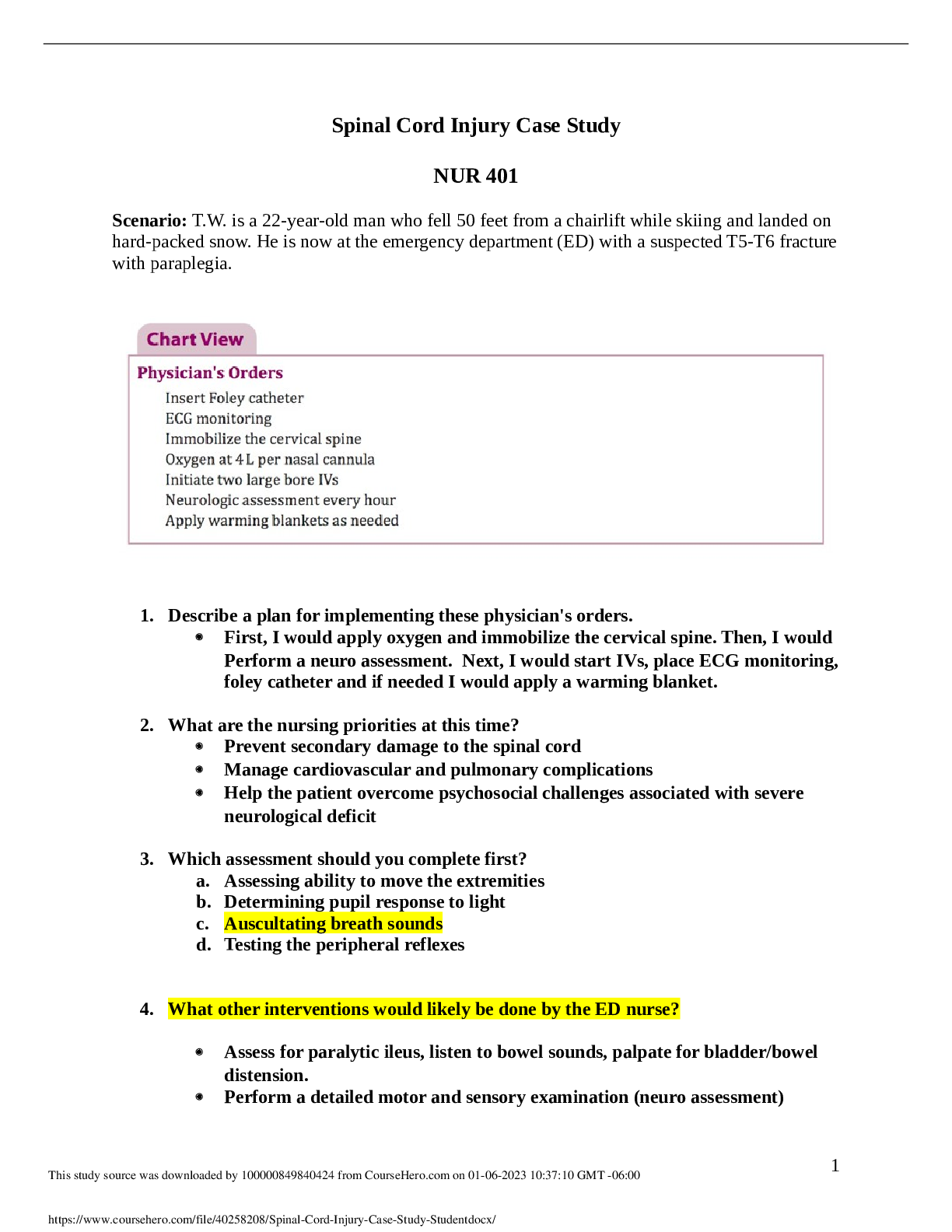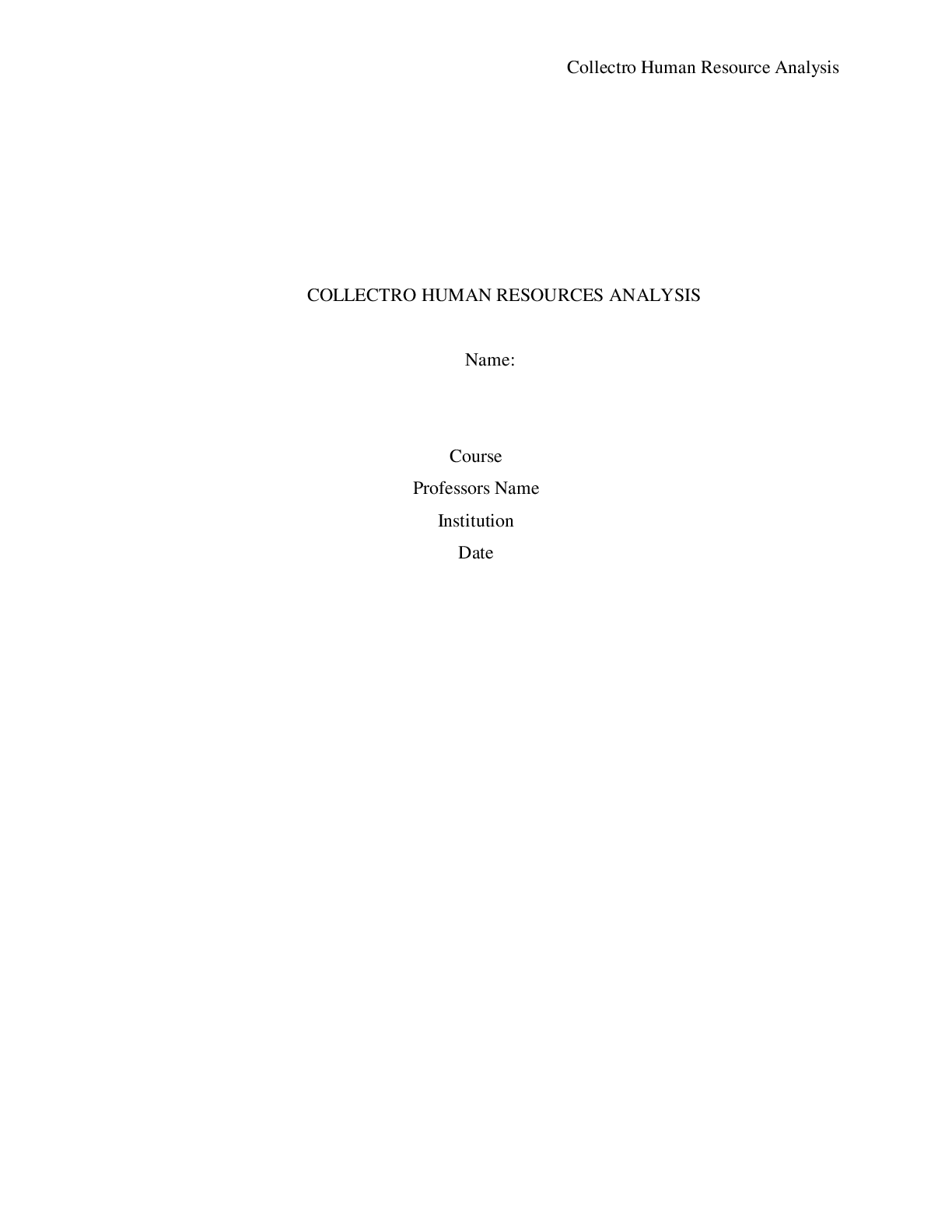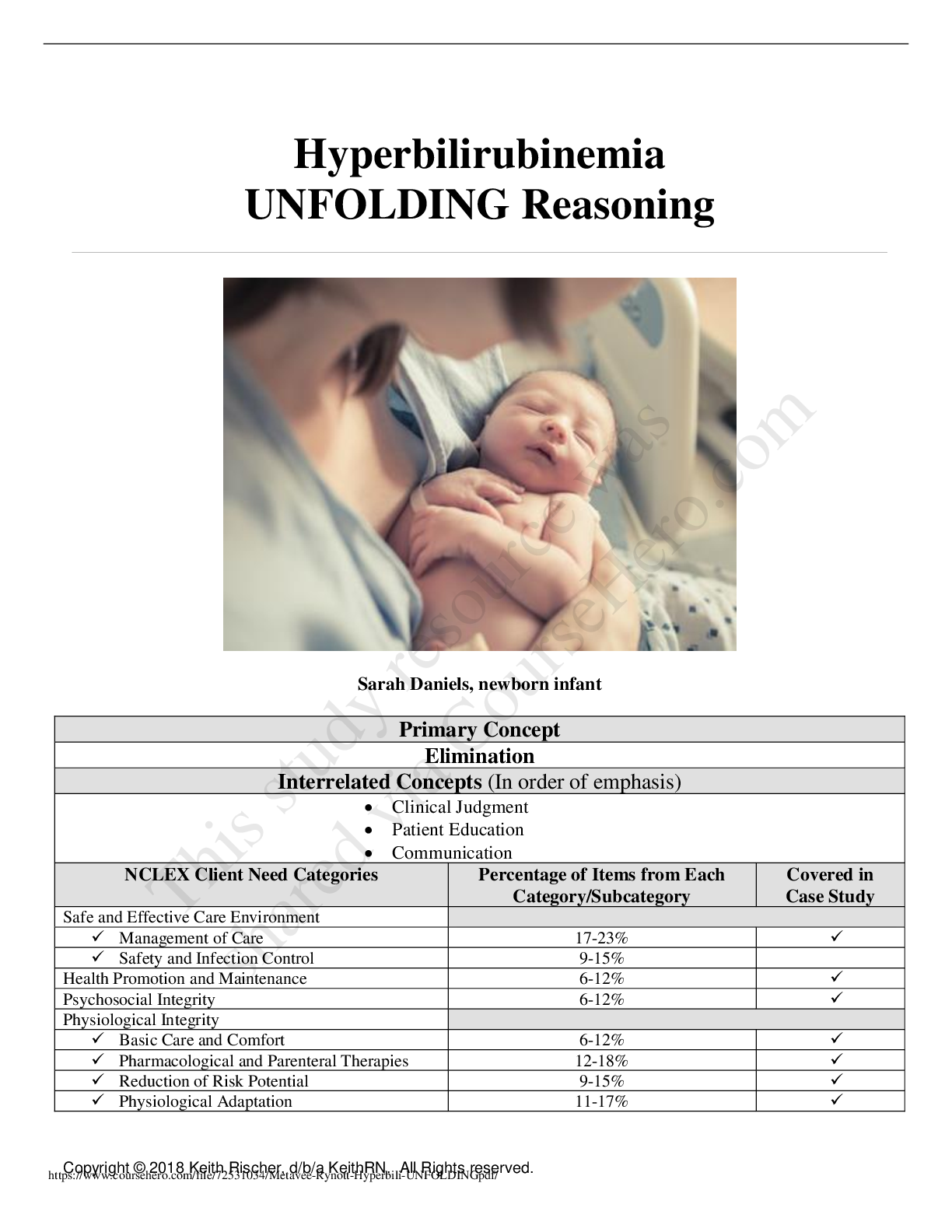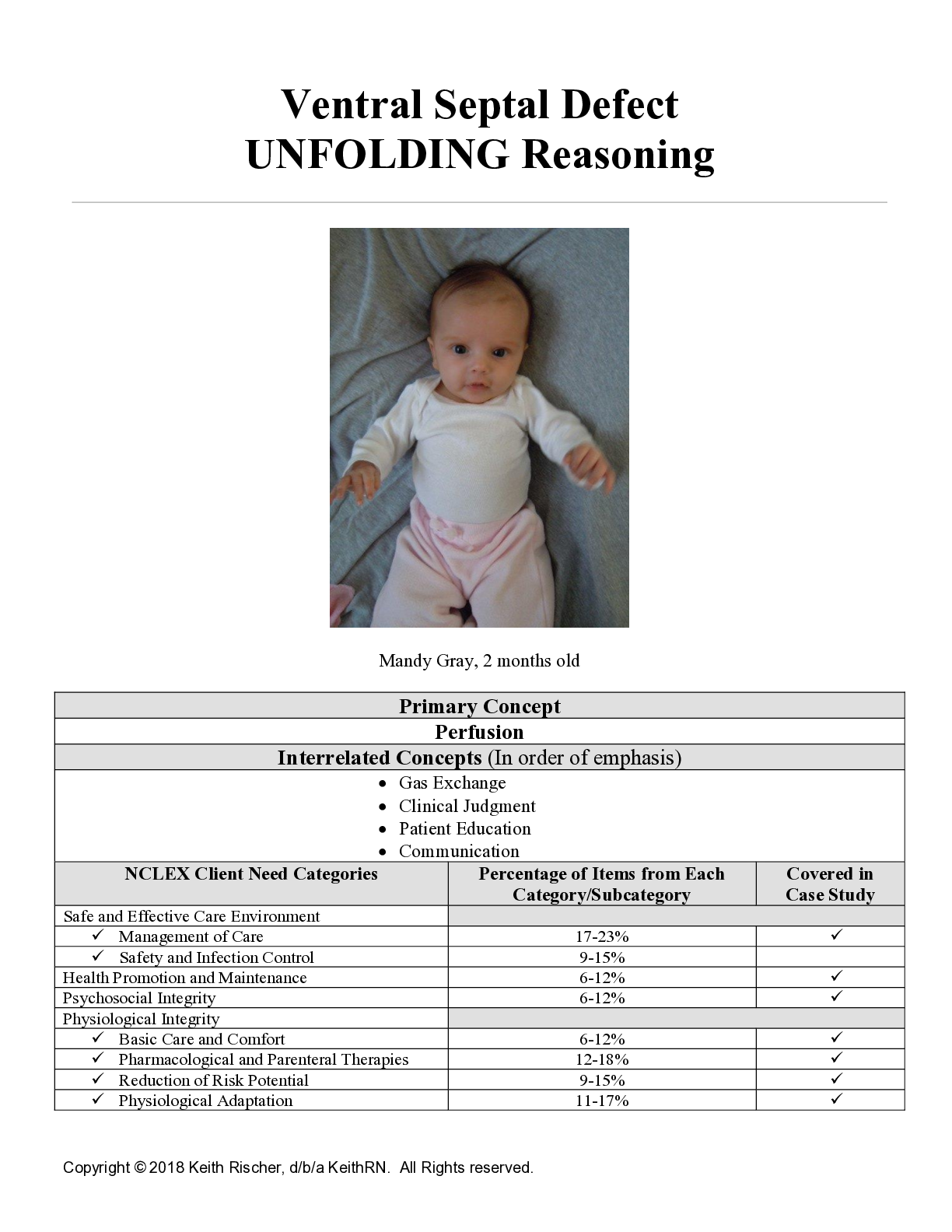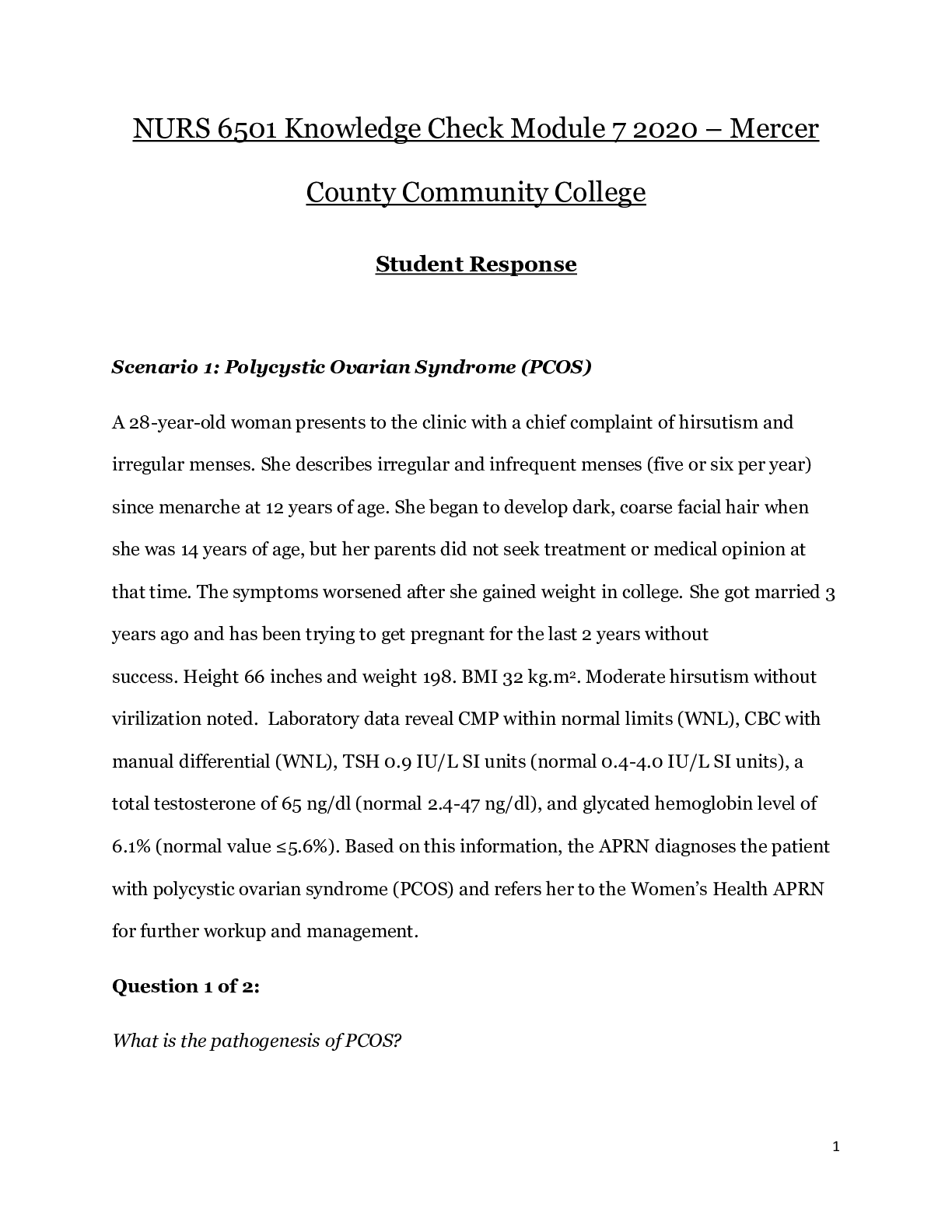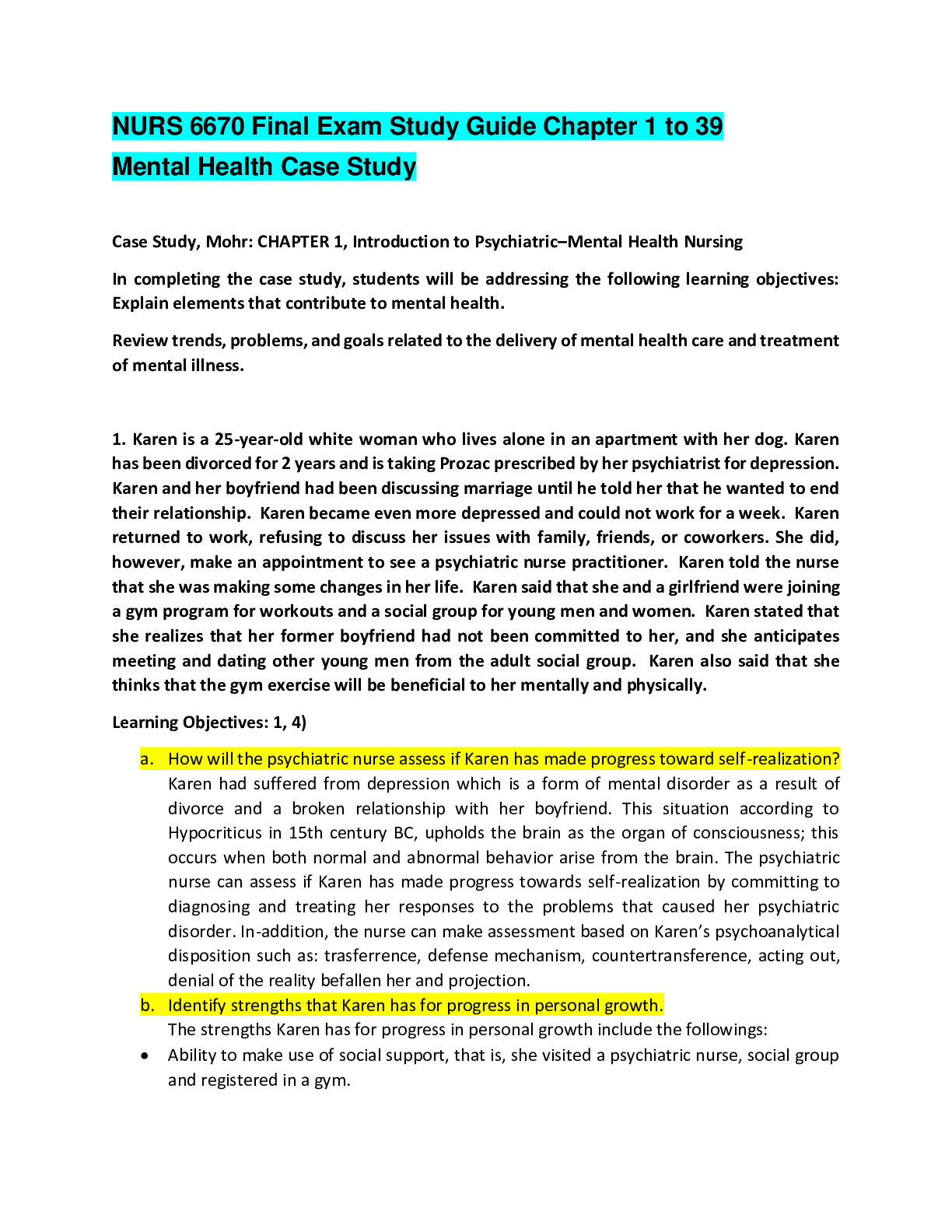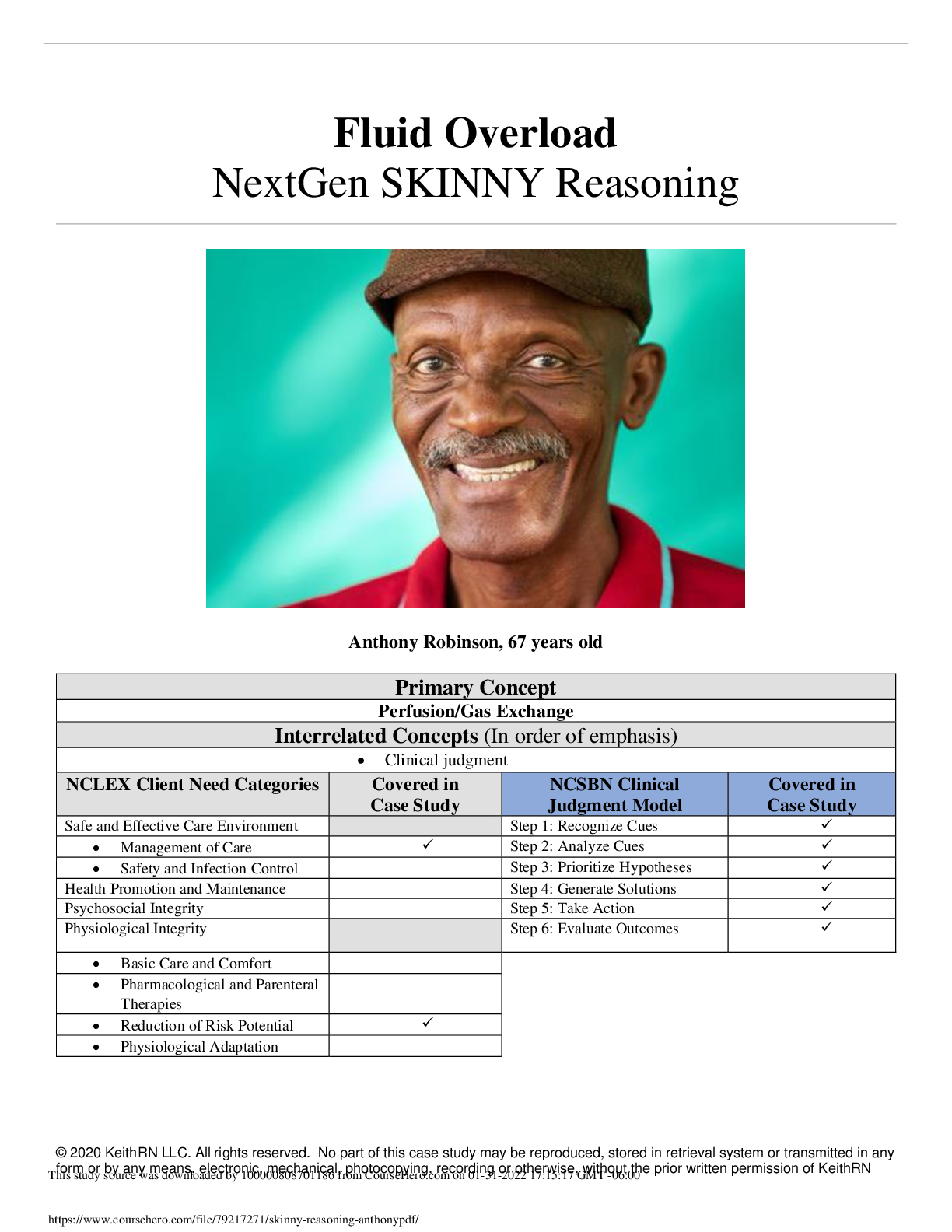*NURSING > CASE STUDY > NURS 6630 Week 9 Assessing and Treating Clients With Attention Deficit Hyperactivity Disorder – Yo (All)
NURS 6630 Week 9 Assessing and Treating Clients With Attention Deficit Hyperactivity Disorder – Young Girl With ADHD/ Katie is an 8 year old Caucasian female.
Document Content and Description Below
(Solution) NURS 6630 Week 9 Assessing and Treating Clients With Attention Deficit Hyperactivity Disorder – Young Girl With ADHD BACKGROUND Katie is an 8 year old Caucasian female who is brought to y... our office today by her mother & father. They report that they were referred to you by their primary care provider after seeking her advice because Katie’s teacher suggested that she may have ADHD. Katie’s parents reported that their PCP felt that she should be evaluated by psychiatry to determine whether or not she has this condition. The parents give you a copy of a form titled “Conner’s Teacher Rating Scale-Revised”. This scale was filled out by Katie’s teacher and sent home to the parents so that they could share it with their family primary care provider. According to the scoring provided by her teacher, Katie is inattentive, easily distracted, forgets things she already learned, is poor in spelling, reading, and arithmetic. Her attention span is short, and she is noted to only pay attention to things she is interested in. The teacher opined that she lacks interest in school work and is easily distracted. Katie is also noted to start things but never finish them, and seldom follows through on instructions and fails to finish her school work. Katie’s parents actively deny that Katie has ADHD. “She would be running around like a wild person if she had ADHD” reports her mother. “She is never defiant or has temper outburst” adds her father. SUBJECTIVE Katie reports that she doesn’t know what the “big deal” is. She states that school is “OK”- her favorite subjects are “art” and “recess.” She states that she finds her other subjects boring, and sometimes hard because she feels “lost”. She admits that her mind does wander during class to things that she thinks of as more fun. “Sometimes” Katie reports “I will just be thinking about nothing and the teacher will call my name and I don’t know what they were talking about.” Katie reports that her home life is just fine. She reports that she loves her parents and that they are very good and kind to her. Denies any abuse, denies bullying at school. Offers no other concerns at this time. MENTAL STATUS EXAM The client is an 8 year old Caucasian female who appears appropriately developed for her age. Her speech is clear, coherent, and logical. She is appropriately oriented to person, place, time, and event. She is dressed appropriately for the weather and time of year. She demonstrates no noteworthy mannerisms, gestures, or tics. Self-reported mood is euthymic. Affect is bright. Katie denies visual or auditory hallucinations, no delusional or paranoid thought processes readily appreciated. Attention and concentration are grossly intact based on Katie’s attending to the clinical interview and her ability to count backwards from 100 by serial 2’s and 5’s. Insight and judgment appear age appropriate. Katie denies any suicidal or homicidal ideation. Diagnosis: Attention deficit hyperactivity disorder, predominantly inattentive presentation RESOURCES § Conners, C. K., Sitarenios, G., Parker, J. D. A., & Epstein, J. N. (1998). Revision and restandardization of the Conners’ Teacher Rating Scale (CTRS-R): Factors, structure, reliability, and criterion validity. Journal of Abnormal Child Psychology, 26, 279-291. Decision Point One Begin Ritalin (methylphenidate) chewable tablets 10 mg orally in the MORNING RESULTS OF DECISION POINT ONE Client returns to clinic in four weeks Katie’s parents report that they spoke with Katie’s teacher who notices that her symptoms are much better in the morning, which has resulted in improvement in her overall academic performance. However, by the afternoon, Katie is “staring off into space” and “daydreaming” again Katie’s parents are very concerned, however, because Katie reported that her “heart felt funny.” You obtain a pulse rate and find that Katie’s heart is beating about 130 beats per minute Decision Point Two Change to Ritalin LA 20 mg orally daily in the MORNING RESULTS OF DECISION POINT TWO Client returns to clinic in four weeks Katie’s academic performance is still improved, and the switch to the LA preparation is lasting Katie throughout the school day Katie’s reports of her heart feeling “funny” have gone away. Pulse was 92 during today’s office visit Decision Point Three Maintain current dose of Ritalin LA and reevaluate in 4 weeks Guidance to Student At this point, Katie’s symptoms are well controlled (her attention is sustained throughout the school day) and her side effects have gone away following change to a long-acting preparation. There is no indication at this point that the dose should be increased as it is always advisable to use the lowest effective dose of stimulant medication. Katie’s heart rate is appropriate for an 8 year old girl and an EKG would not be indicated based on her heart rate. Examine Case Study: A Young Caucasian Girl With ADHD You will be asked to make three decisions concerning the medication to prescribe to this client. Be sure to consider factors that might impact the client’s pharmacokinetic and pharmacodynamic processes. Assessing and Treating Clients With Attention Deficit Hyperactivity Disorder – Young Girl With ADHD. At each decision point stop to complete the following: • Decision #1 o Which decision did you select? o Why did you select this decision? Support your response with evidence and references to the Learning Resources. o What were you hoping to achieve by making this decision? Support your response with evidence and references to the Learning Resources. o Explain any difference between what you expected to achieve with Decision #1 and the results of the decision. Why were they different? • Decision #2 o Why did you select this decision? Support your response with evidence and references to the Learning Resources. o What were you hoping to achieve by making this decision? Support your response with evidence and references to the Learning Resources. Assessing and Treating Clients With Attention Deficit Hyperactivity Disorder – Young Girl With ADHD. o Explain any difference between what you expected to achieve with Decision #2 and the results of the decision. Why were they different? • Decision #3 o Why did you select this decision? Support your response with evidence and references to the Learning Resources. o What were you hoping to achieve by making this decision? Support your response with evidence and references to the Learning Resources. o Explain any difference between what you expected to achieve with Decision #3 and the results of the decision. Why were they different? Also include how ethical considerations might impact your treatment plan and communication with clients. Note: Support your rationale with a minimum of three academic resources. While you may use the course text to support your rationale, it will not count toward the resource requirement. Solution: Decision Tree for ADHD Attention Deficit Hyperactivity Disorder (ADHD) is a crucial mental illness that is characterized by hyperactivity, impulsivity, and inattention. The conditions are most common in the adolescent years and can interfere with the victim’s social life, academic, and day-to-day activities. The management of the symptoms is done through pharmacological interventions involving stimulant medication (Schweren et al., 2019). Although no cure is scientifically proven to alleviate ADHD, various stimulant medications have been foundto work better through blocking the reuptake of dopamine and raising the levels of norepinephrine in the synaptic cleft of the brain. However, different patients may respond differently to various stimulant drugs. Therefore, making decisions on the appropriate drug depends on the satisfactory level and the mechanism of action of specific drugs of different patients. The current case involves a Caucasian female patient named Katie of age 8 years. She is brought by her two parents to the primary care provider. Katie’s teacher had recommended that she might have ADHD. Also, the PCP recommended further psychiatric evaluation to confirm the case. Based on the Conner’s Teacher Rating Scale-Revised completed by Katie with the help of her teacher confirmed that she has been easily distracted, inattentive, poor in reading, spelling, and arithmetic, and forgets things easily. She is no longer interested, and cannot finish tasks on time. Katie admits she feels lost, but her home life is just okay and no form of abuse is existing. Considering the mental status findings, the client has achieved appropriate developmental milestones for an 8-year-old age. She is in place, person, time, and event. She is also well dressed as per the weather. Additionally, her self-reported mood is euthymic, bright affect, intact attention. The client denies paranoid, delusional thoughts. She also denies auditory and visual hallucinations. Lastly, her judgment and insight are age-appropriate. She also denies suicidal or homicidal ideation. [Show More]
Last updated: 1 year ago
Preview 1 out of 9 pages
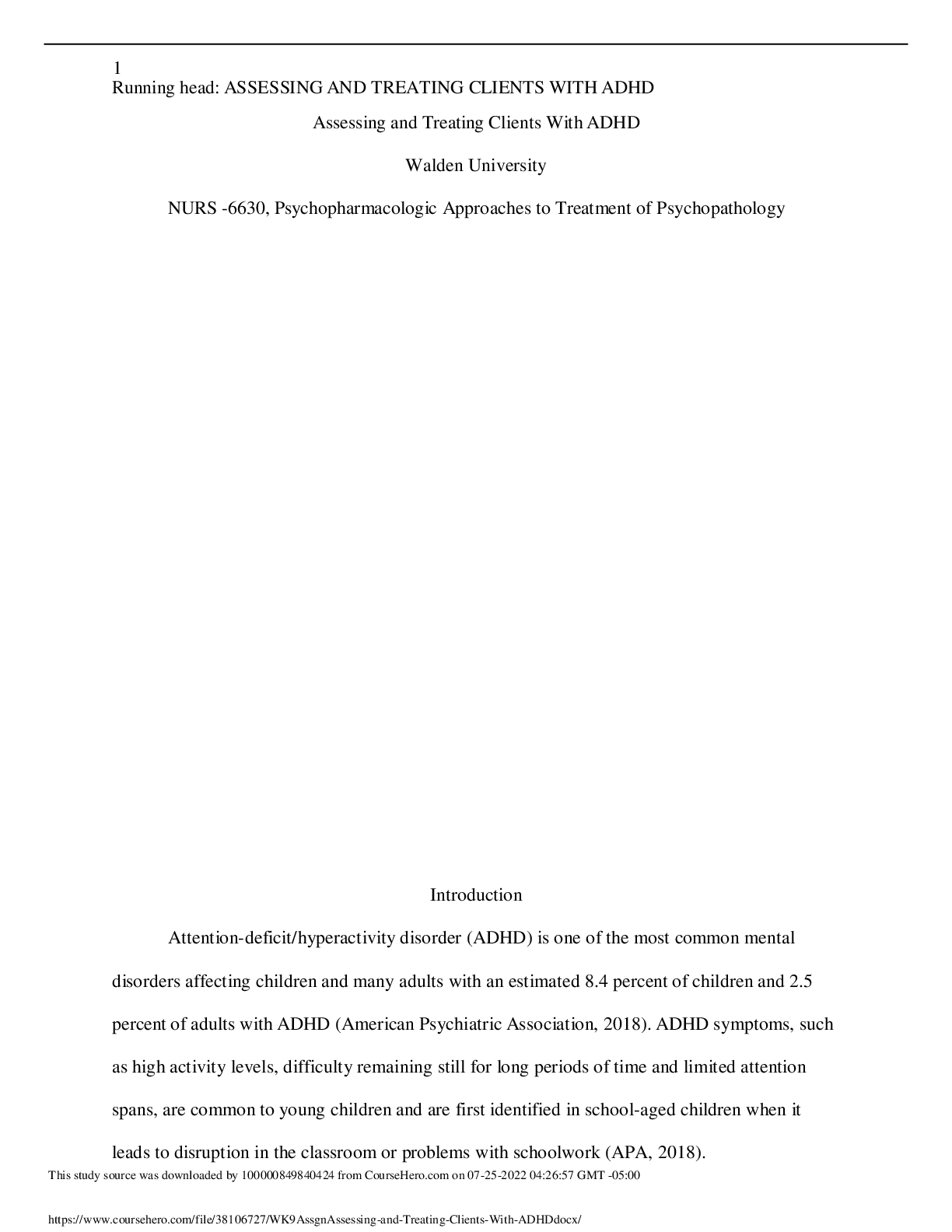
Reviews( 0 )
Document information
Connected school, study & course
About the document
Uploaded On
Jul 25, 2022
Number of pages
9
Written in
Additional information
This document has been written for:
Uploaded
Jul 25, 2022
Downloads
0
Views
56
.png)



